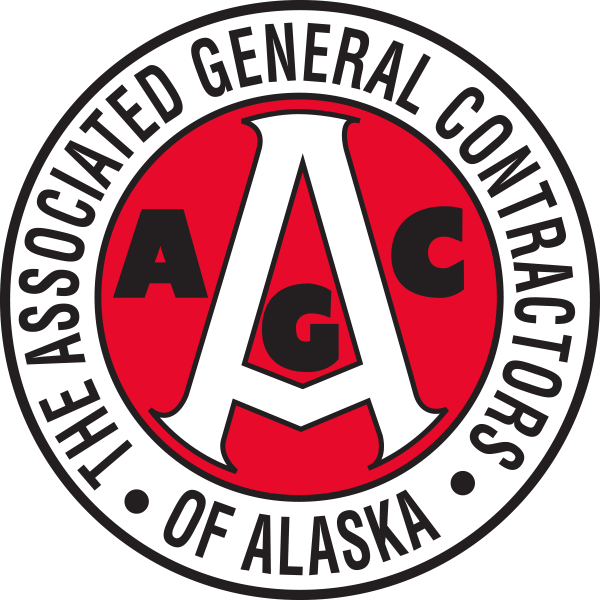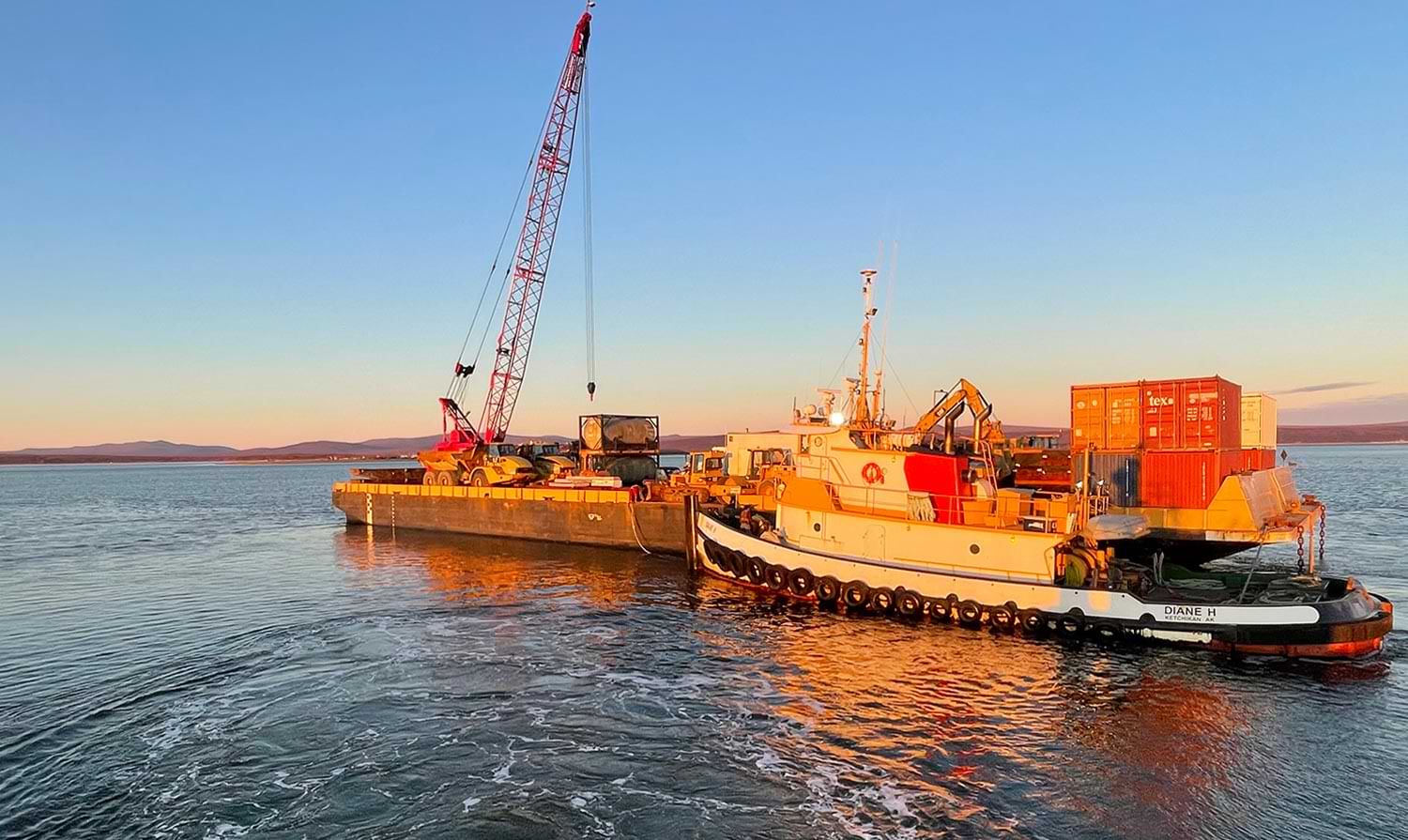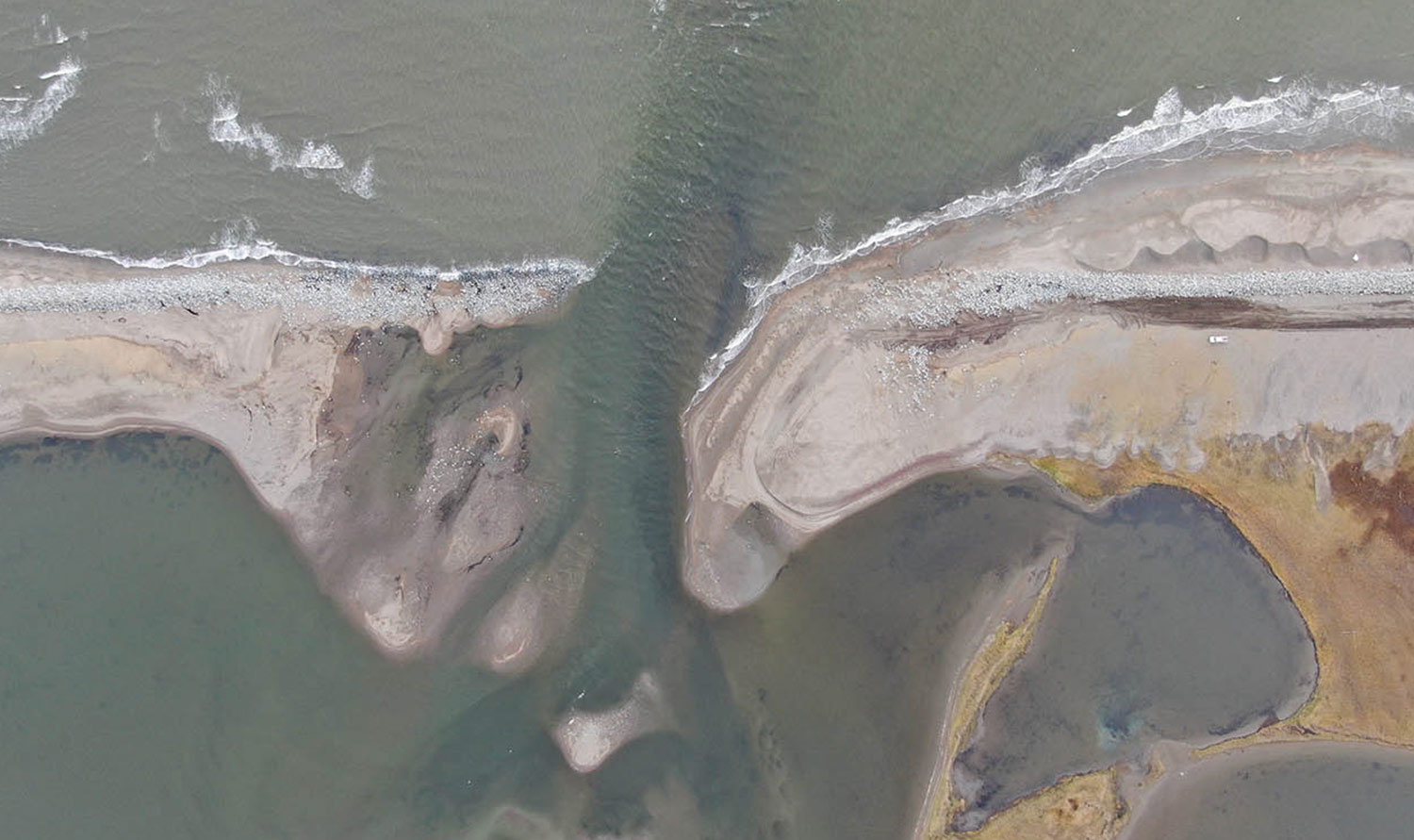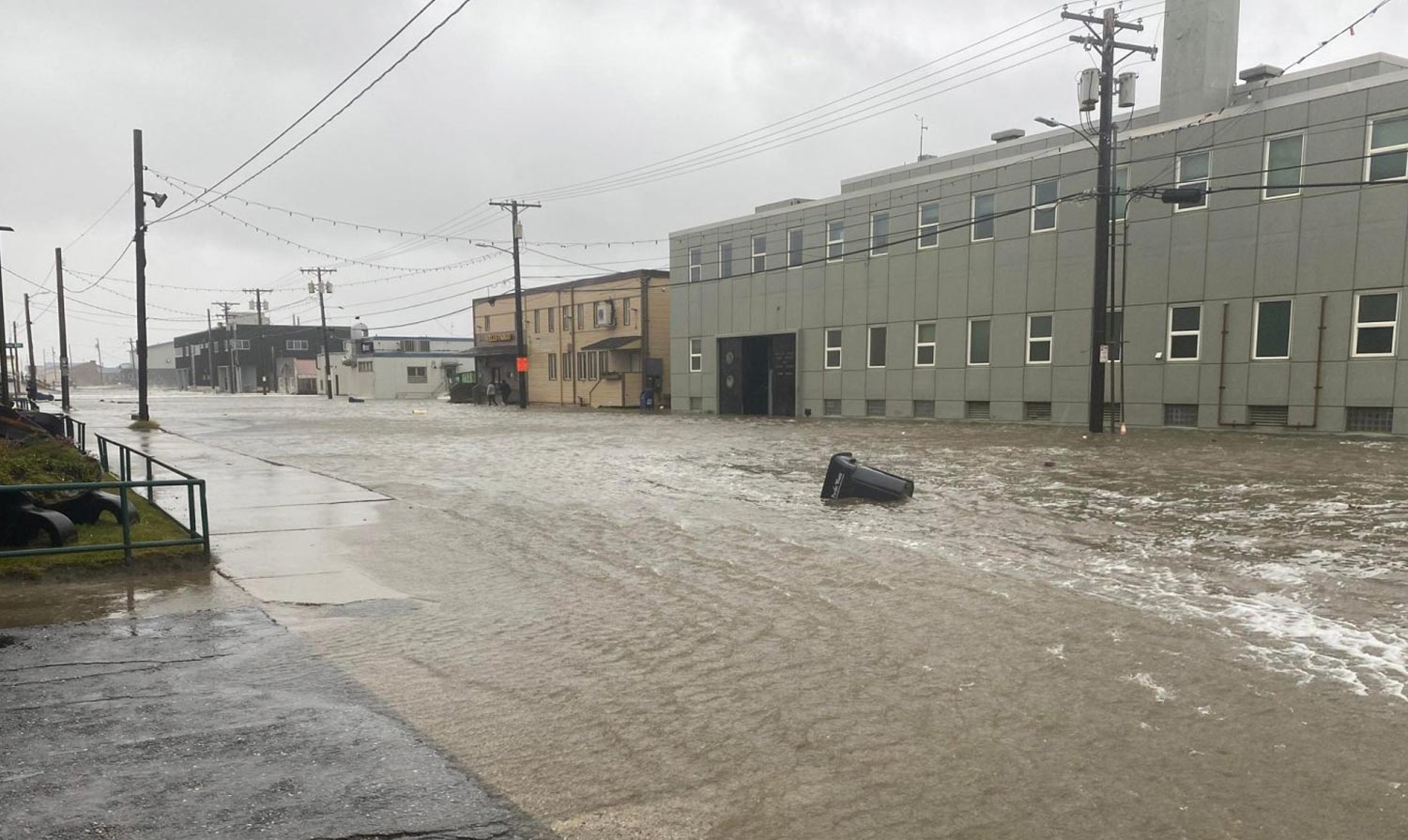
Update
Road to Recovery
AGC members assist with recovery after Typhoon Merbok
Photo provided by Knik Construction
Protective water berms were destroyed in many coastal communities and required immediate repairs to prevent further land erosion and additional flood defense. Knik Construction worked with the Alaska Department of Transportation and Public Facilities to rebuild the berm and reinforce the shoreline.
Photo provided by Knik Construction
Road to Recovery
AGC members assist with recovery after Typhoon Merbok
By Rachael Kvapil
n September, Western Alaska experienced a storm like no other. Typhoon Merbok, which originated east of Japan and gained strength due to unusually warm Pacific Ocean water, tore through the region, leaving devastation in its wake.
Destruction of protective berms resulted in eroded shorelines and roads; hurricane-force winds pushed houses off their foundation, tossed around boats and vehicles, and blew excessive debris across communities.
Once the storm passed, the Alaska Department of Transportation and Public Facilities, or DOT&PF, statewide contractors, and local suppliers immediately launched efforts to expedite repairs.
Advanced weather models allowed the state’s Emergency Operation Center to track the storm’s approach, anticipate the potential impact on the region, and begin organizing relief efforts. Al Beck, DOT&PF Project Delivery Team Lead, says Nome’s maintenance and operations department mobilized immediately and, by Sunday, were clearing debris and assessing damage.
At the same time, DOT&PF workers were identifying contractors in the area that could begin repairs to roads, water barriers, and any other infrastructure in the area. Shannon McCarthy, communications director for DOT&PF, says several contractors had just completed projects nearby and still had equipment, supplies, and manpower available.
“Once we were able to authorize emergency contracts, a number of contractors, subcontractors, and suppliers were ready to go,” says McCarthy. “The quick response of our contractors is a tribute to our strong working relationship within the state.”
Beck explained five cities and villages needed immediate attention: Nome, Golovin, Elim, Shaktoolik, and Koyuk. These communities experienced damage that required crucial repairs in order to survive the cold, harsh winter ahead.
Knik Construction had just completed an airport project in Nome when the storm hit. Dan Hall, president of Knik Construction, says DOT&PF contacted them shortly after the storm passed, and within days Knik Construction crews were cleaning up debris and reestablishing roads that had eroded in the storm. Several Nome subcontractors worked with Knik Construction on the restoration efforts, including Bering Straits Native Corporation, West Enterprises, and Q Trucking Company.
“The biggest challenge was trying to gather people up so we could get started,” says Hall.
Nome is not on the Alaska road system; however, it has extensive roadways connecting the community to several others. According to DOT&PF, the storm damaged more than 20 non-consecutive miles of roadway and embankments, which drastically altered the coastline and increased the amount of sandy debris scattered along the tundra. Two thousand feet of armored rock making up the Nome seawall was either completely gone or six feet lower than where it once was. Along the Nome-Council Highway, the storm bent the guardrail across Safety Sound bridge, cutting people off from their property on the other side of the bridge.
Hall says crews worked until the end of October, hauling tons of material in to reconnect the road without building a new bridge. DOT&PF and Knik Construction also worked together to rebuild parts of the seawall before freeze-up.

Remote communities in Western Alaska are not on the main Alaska road system and require alternative methods to ship equipment and supplies. Tumet Industries, LLC loaded equipment and supplies on a barge traveling between communities in need of repair after Typhoon Merbok.
Photo provided by Tumet

Typhoon Merbok destroyed the bridge that connected the roadway on the Nome-Council Highway. The Alaska Department of Transportation and Public Facilities worked with Knik Construction Co., Inc. to haul in enough material to reconnect the road without building a new bridge.
Photo provided by the Alaska Department of Transportation

High waters brought on by Typhoon Merbok flooded many buildings in Western Alaska. Condemned buildings were torn down, but salvageable buildings were dried out and repaired enough to survive the winter.
Photo provided by the Alaska Department of Transportation
In Elim, Tumet removed debris and materials from all the community roads, completely rebuilt Front Street, replaced the rock revetment in the front of town, cleared out a concrete box culvert, and replaced and repaired damaged guardrails. Crews also reinforced the storm-eroded bank below the Southside subdivision, inspected, flushed and cleaned out the sewer manholes, and reinforced the community’s septic outfall system that had been exposed. Likewise, Tumet rebuilt the road from town to Moses Point, which was destroyed during the storm. This included pit development, hauling, placing, and building 5.2 miles of road.
In Shaktoolik, Tumet cleared and reopened the evacuation road to allow ATV access down the coast, removed debris from within the community to provide safe passage through town, and hauled and placed over 60,000 cubic yards of material to rebuild the storm protection berm.
In Koyuk, there were four flooded homes, and one was relocated during the storm. One home was moved out of the road and back to its original lot. These homes were repaired and left in a dry, safe, and livable state to get residents through the winter.
Burmeister says efforts wouldn’t have been a success without the teamwork within the communities and the State of Alaska; Run It Wild, LLC; Bering Pacific Services Company; Outsiders Hardware and Grizzly Building Supply in Nome; Uresco and Specialty Supply Inc. in Anchorage; Bering Air; Baker Contracting in Kotzebue; Northern Air Cargo; Quality Auto Parts and NAPA; Burmeister Service Solutions, LLC; J&J Mechanical in Fairbanks; Impulse Electric, LLC in Fairbanks; Rural Energy Enterprises in Anchorage; Tundra Toyo and Heating, LLC in Nome; and Q Trucking, also of Nome.

Hurricane-force winds blew debris throughout the area, blocking travel and creating additional damage. Tumet Industries, LLC needed to remove debris before rebuilding the front street in Elim.
Photo provided by Tumet
“These communities and this region are our home—it is where we have grown up and actively participate in subsistence activities and live our daily life,” says Burmeister. “The teamwork between Tumet Industries, LLC, the local communities and people, the regional airlines, smaller contractors, parts and material suppliers, barging companies and the State of Alaska, all working together, made an impossible job and timeline a big success.”